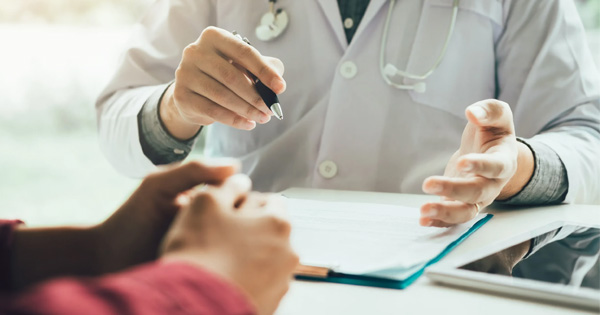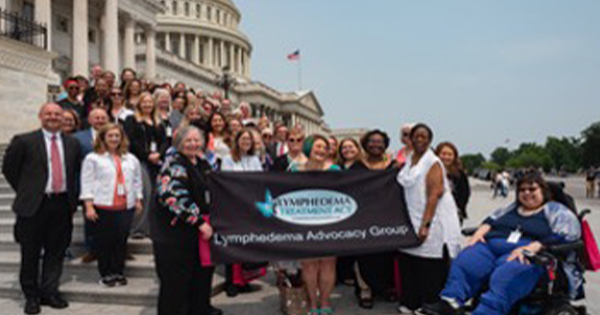Breast cancer annual incidence exceeds 2 million people since 2022, making it the most common women’s cancer worldwide (World Health Organization, 2024).
Breast cancer-related lymphoedema (BCRL) is a cancer treatment-related sequelae conservatively affecting 20–40% of women treated for breast cancer (Tandra et al, 2019; Armer et al, 2020; International Society of Lymphology [ISL], 2020; González- Fernández et al, 2024). While more than 70% of cases develop within the first 2 years after breast cancer treatment, survivors are at a lifetime risk of developing BCRL (Kwan et al, 2020).
Lymphoedema is a disruption of the lymphatic transport system, resulting in the accumulation of protein-rich fluid in the extravascular interstitial spaces (Tidhar et al, 2021). Axillary lymph node dissection, radiation and chemotherapy can disrupt the lymphatic transport system, leading to complications such as physical dysfunction of limbs, skin changes, cellulitis, body image issues, and return-to-work challenges (Armer et al, 2020; Sun et al, 2020; Anderson et al, 2021). Lifetime, consistent self-management behaviours are key to preventing complications and maximising the overall quality of life (Armer et al, 2016, 2020).
Returning to work after BCRL diagnosis presents challenges for breast cancer survivors. The impact on life activities, both occupational and recreational, can be profound (Sun and Armer 2019; Sun et al, 2020). Returning to work is a key recovery component for breast cancer survivors (Viseux et al, 2023; Corbière et al, 2024). Survivors may have to adapt work behaviours, change jobs, lose a current job or retire before they had planned to as a result of BCRL (Schmidt et al, 2018; Sun et al, 2020; Anbari et al, 2021; Tan et al, 2022). These changes can lead to decreased quality of life, distress, and financial challenges (de Jong et al, 2016; de Vrieze et al, 2020; Sun et al, 2020). Survivors from diverse backgrounds may experience unique challenges, which can shape their perspective on returning to work after diagnosis.
The survivorship experience is shaped by cultural influences and personal self-care choices. Cancer survivorship and lymphoedema care research have encouraged the tailoring of self-management plans to include cultural practices and personal self-care goals to improve the sustainability of these plans (Armer et al, 2020; ISL, 2020; Anbari et al, 2021; Anderson et al, 2021; González-Fernández et al, 2024). It is important for lymphoedema therapists and healthcare professionals to understand these influences and choices to support survivors in managing this condition for a lifetime.
To understand both the shared and the unique experiences of the return-to-work for breast cancer survivors living with BCRL, we interviewed breast cancer survivors with BCRL from four different cultural and socioeconomic backgrounds. This cross-case group comparison aimed to examine survivors’ shared and unique experiences in BCRL self-management while maintaining other daily life functions, such as occupational and unpaid work responsibilities.
Methods
Conceptual framework
Yin’s (2018) comparative multiple-case study methodology was used to design this study. We focused on the ongoing phenomenon of BCRL within the real-life context of return-to-work.
In this study, ‘case’ refers to the breast cancer survivor(s) who were diagnosed with lymphoedema and engage in self-management activities while carrying out other daily activities such as paid employment.
Four culturally distinct groups were chosen to broadly query the experience of living with BCRL and return-to-work:
- A Midwestern US urban community.
- A Midwestern US rural community.
- A Southwestern US Hispanic/Latina community.
- A small urban community in Ghana.
Each mutually exclusive group was considered a case study, supporting the choice to use a multiple-case study design (Yin, 2018).
We followed a “replication” logic format for each case group, replicating the study process for each of the multiple cases. We predicted that we would find both similar and unique experiences within and across the case groups.
The study was framed using the International Classification of Functioning, Disability, and Health (ICF) conceptual framework (WHO, 2013). Living with BCRL represents a complicated phenomenon at the intersection of individual contextual factors, BCRL disease processes, work activities, and BCRL self-management behaviours (WHO, 2013, 2018; Sun et al, 2020). The ICF measures both individual and population health and disability factors. Important contextual factors of both environmental and personal origins can influence individuals’ daily functions. A person’s behaviours and functioning can be affected by the environment and can reciprocally change the lived environment. While BCRL self-management is important to a survivor’s overall quality of life, it is not the sole component of their life and may not be the primary condition that influences all self-management behaviours. Other life functions, such as occupational and recreational activities and family responsibilities, involve decisions requiring a balance of all these factors over a survivor’s lifetime. This complex, multidirectional factor relationship was reported in a previous publication (Sun and Armer, 2019).
Sample
Participants were purposively sampled from several locations in the US and Africa. Recruitment in the US occurred in urban Midwestern, rural Midwestern and southern Texas. Recruitment in Ghana focused on an urban area.
Mutually exclusive groups of urban (n=12), rural (n=13), Hispanic/Latina (n=10), and Ghanaian (n=11) breast cancer survivors living with BCRL were recruited as study participants. Inclusion criteria included:
- Adult 18 years and older.
- Self-reported diagnosis of breast cancer.
- Self-reported diagnosis of BCRL.
- English-speaking.
- Self-identified with the desired cultural group (rural, urban, Hispanic/Latina ethnicity and Ghanaian).
All participants identified as female.
Recruitment was conducted in a large Midwest urban centre; a small Midwest urban centre providing service to a large rural population; a large South Texas urban centre with a majority Hispanic/Latina population; and an urban centre in Kumasi, Ghana. Participants were purposively recruited from local hospitals, community health centres, breast cancer support groups, cancer survivor events, lymphoedema therapy clinics and through snowball sampling from current participants. Printed study flyers were distributed to and through these activities. Consent documents were discussed with participants and questions were addressed by study principal investigators (PI) at each location. This work was approved by the University of Missouri Institutional Review Board.
Data collection
A demographic and health survey was administered to participants. Information about socioeconomic status, education, social support, breast cancer diagnosis, cancer treatment and side effects, and work activities was collected and is reported in previously published articles. The Short Form Survey (SF-36, Version 1.0) was administered to each participant to assess perceptions of health concepts. The SF-36 validity and reliability in measuring health-related quality of life in cancer populations are well documented (van den Berg et al, 2021; Liang et al, 2022). Inclusion criteria included: self-reported breast cancer diagnosis; subsequently diagnosed with lymphoedema; employed or self-employed at the time of developing lymphoedema; and English-speaking.
Each participant completed a 45–90 minute semi-structured, one-on-one interview with a researcher. Each interview was audio-recorded using digital recorders or recorded using Skype or Zoom audio/video-recording software (Ecamm Call Recorder) which was recorded and transcribed for analysis. Interview topics included: work content; lymphoedema-related changes and management; work outcomes; support; and reflections on the lived personal experience of lymphoedema after breast cancer treatment (Table 1). The demographics survey and semistructured interview guide used with each sample group were adapted from the work of Sun and Armer (2019). The experiences of each unique case group are reported in other published work (Sun et al, 2020; Anbari et al, 2021; Anderson et al, 2022).
Reflexive journalling or analytic memo‑ing was completed after each interview by the primary researcher (Creswell and Báez, 2021; Saldaña, 2021). Entries summarised the interview, highlighted details for the researcher, identified points of clarification, documented possible influences on the analysis process (e.g. personal biases), and noted any unusual observations (e.g., negative feelings, interruptions; Cresswell and Báez, 2021; Saldaña, 2021). These writings provided us with the opportunity to reflect on our current knowledge of the study phenomena, consider past experiences that might influence our perceptions of the participants’ narratives, to identify potential biases that might influence content analysis, and document initial connections within and between the participants’ narratives.
Data management and analysis
Each primary researcher analysed their group’s interviews and survey results. Survey results were analysed using frequencies (mean, median). Interview transcripts were analysed using content analysis. Once this initial analysis was complete, we met to conduct cross-group analyses. Within-group and cross-group analyses using a constant-comparative approach were performed. Themes and subthemes were synthesised within and across groups to identify common and unique themes about the return-to-work experience.
Reflexive journalling and analytic memoing entries were used to triangulate the data during content analysis. These interactions, interpretations, and observations were used to co-construct the contextual frame for the rich narrative shared by the participants (Cresswell and Báez, 2021; Saldaña, 2021). Triangulation activities across the case groups were carried out during team meetings to reach a consensus on the contextual frame for the study results.
Results
Study characteristics
A total of 46 survivors diagnosed with BCRL were interviewed in diverse settings and their data were included in this analysis. The reported ages of the participants ranged from 40 to 78 years. Survivors self-identified racially/ethnically as white non-Hispanic, African American/Black, Hispanic/Latina, and Ghanaian. Education attained ranged from less-than-high-school graduates to several years of college. The number of people living in the household ranged from one to five. Years of breast cancer survivorship varied from 8 months to 25 years, with the time since lymphoedema diagnosis from one month to more than 20 years. All participants were treated for breast cancer with surgery.
Themes
This cross-case group comparison identified two shared-experience themes: limited awareness and individual creative adaptation. Four group-unique themes were identified: self-resilience; interdependency on supportive relationships; co-worker misunderstanding; and social stigma and distress. In the following sections, each theme will be illustrated.
Shared experiences across case groups
Theme: Limited awareness
Limited awareness of what lymphoedema was and the ways to manage the condition was a challenge shared across the case groups. These challenges created barriers to self-management, leading to complications such as cellulitis, which negatively impacted the survivor’s ability to return to work or continue to work.
All case groups identified a lack of knowledge about lymphoedema as a challenge. This lack of knowledge was not limited to healthcare professionals, as some survivors stated that family, friends, and employers also did not know about lymphoedema.
(Urban) “I think the most information that I received about lymphoedema was just in [a] brochure, the written information that was given to me. I just don’t recall getting a lot of warning from my surgeon or from my oncologist, the people in the chemo room, radiation.”
(Rural/small-town) “I kept going to the doctor and they’d just give me a treatment and nobody ever really said anything about it, you know. And so, it was really in the 2010s when it [BCRL] was kind of identified by my primary doctor as, you know, a side-effect of… of my initial breast cancer.”
(Hispanic/Latina) “I don’t think people really understand and, you know, people don’t realise like, because they don’t see it [the arm with BCRL]… you look the same… in the workplace people just think, one, either you’re making it up, or two, you’re kind of just being like a baby about it.”
(Ghanaian) “We need more education because I realised that most people don’t know much about it.”
Theme: Individual creative adaptation
Developing lymphoedema self- management routines was an individual activity in which survivors integrated self-care practices, learned from lymphoedema therapists, into daily living activities through creative adaptations. Challenges in performing daily work activities, whether in their paid occupations, for activities of daily living (e.g. bathing, cooking, cleaning) or recreational hobbies (e.g. yard work), required the survivors to adapt their physical behaviours to accommodate the changes created by the lymphoedema. These adaptations were uniquely personal, based in cultural self-care practices, personal health knowledge, and the unique working conditions of each survivor. Lymphoedema self-management activities, such as wearing compression garments or lotions chosen for skin care, were also modified based on the unique lived experience of the survivor.
(Urban) “I also started using roller bags, so I didn’t have to carry as much, so that was an adaptation I made… I got something to put my arm on, so that I could hit the keyboard a little bit. So I got some tables and elevated my arm, so I could reach the keyboard a little better.”
(Rural/small town) “Just reaching for stuff, I always use my other arm.”
(Hispanic/Latina) “I like the heat and I work in the yard all the time and I know better…now I wait for evening.”
(Ghanaian) “I couldn’t write often. I had to sign an important document, I had to take the wraps out even though it wasn’t time for me to unwrap them I took it to sign. So all that they are challenges with the lymphoedema.”
Group-unique experiences across case groups
Survivor narratives also described among-group differences in the return-to-work experience.
Self-resilience (Rural/small town)
Rural/small-town survivors identified self resilience as a key factor in their return-to-work process.
“Some things I can’t control. How somebody’s going to react to my appearance is not anything I have control over, only the way I act, and I think that’s true of the attitude I had when I had the cancer.”
“Life just goes on. Everybody has something. [laughs]”
Importance of supportive relationships (Hispanic/Latina)
Hispanic/Latina survivors identified a greater reliance on the support of familia and work colleagues to navigate the challenges of returning to work after being diagnosed with lymphoedema. Participants reported family members wanting to care for them, to decrease the amount of work they were doing, and to provide care items.
“Well, with my husband, he’s been with me through everything… It’s like ‘Whatever you want, whatever you need, I’ll do it.’ When I was feeling sick at home he would just do the best thing and leave me alone.”
“Everybody in my family, like even my cousins and stuff, my cousin read about, you know, I guess what was happening and so then she got me a special pillow that she ordered.”
Survivors saw work as a place to socialise with friends and co-workers, who were also a source of support during cancer treatment and for lymphoedema self-management.
“[Work]… that’s where I socialise. I work because I like to work cause I socialise. That’s where my friends are.”
“People would be like ‘Do you need a ride to chemo or do you need me to like watch your class’… There’s people that I know that like if I, if I felt bad and I was like ‘I’m gonna leave early because I don’t feel good’, you know… there are certain people that would help me.”
Co-worker perceptions (Hispanic/Latina)
Hispanic/Latina survivors identified a perception of co-workers misunderstanding their survivorship journey of self-managing lymphoedema as a significant concern. This resulted from how co-workers would not talk to them about their diagnosis or why they were absent from work so the survivor could explain, or from changes in how colleagues would respond to continued requests for time away from work to attend lymphoedema therapy sessions.
“That person is already alienating me by making the comment instead of keeping it to themselves, you know, I feel like maybe I should not, like I said, be so aggressive in the response, like I should just kind of let it go.”
“Last school year, like I went through and I did it and [they] said ‘OK, that’s fine, you know, just leave when you need to’. Then, when I started this school year I told [them] I still have to continue [lymphoedema therapy]. It’s not every week; it’s like, once a week and then [they] said ‘Well, you’re gonna have to have a note now. So every single time you go you need to have a note.’”
Survivors described how the lack of knowledge about lymphoedema and the need to return for therapy when symptoms became more severe would create negative perceptions with co-workers and compromise this important source of support:
“When I was going through cancer everybody was like, ‘Yay, you’re doing so good and everything’, and now it’s like ‘Well, why are you still taking off, you know, why are you still like going home early?’, which I’m not, but that’s what they think.”
“I feel like people think like I’m trying to take advantage of something when it’s not the case at all, you know, but they don’t understand that.”
Cancer and lymphoedema social stigma and distress (Ghanaian)
Ghanaian survivors reported feeling more socially stigmatised and going through more physical, psychological, and financial hardships when it came to the decision to go back to work following their diagnosis. The participants felt uncomfortable since they were asked too many questions and felt compelled to explain themselves.
“I am not sick. It may be a sickness, the way people see you and look at as if you are a very sick person who should sit in the house, not going out. I hate it, I don’t like it.”
“They see you and they say, eihh, when did you get hurt? Or what happened, is it an accident?, is it a cut? Some scream, I mean, and I just don’t like it.”
Discussion
In this culturally diverse, cross-case group comparison, breast cancer survivors detailed shared and unique experiences with breast cancer-related lymphoedema self-management while returning to work. Survivors from different cultural backgrounds found commonality in varying levels of BCRL knowledge and how to manage it, while adapting work activities to return to the workforce to the best of their new ability. Unique perspectives on the survivorship experience with returning to the workforce included reliance on self-resilience, supportive relationships, perceptions of co-workers’ viewpoints, and concerns about the social stigma created by the visual presentation of self-managing BCRL while living and working (Schmidt et al, 2018; González-Fernández et al, 2024; Sun et al, 2020) .
The number of cancer survivors continues to increase. Improved cancer treatments and symptom management processes may increase the survivor’s lifespan, but can still result in treatment-related sequelae, such as secondary lymphoedema. The need for tailored, sustainable, and feasible survivorship care continues to be urgently needed to optimise the survivor’s life-long quality of life (Armer et al, 2020; Blinder et al, 2012, 2022; Anbari et al, 2021; Dugan et al, 2024).
Successful return-to-work has been shown to be important to overall quality of life (Vignes et al, 2019; Algeo et al, 2021; Emerson et al, 2023). The quality of work life, as defined by the survivor, may support improved cognitive function and reduce emotional stress (Chapman et al, 2023), and help to preserve physical function (Lee et al, 2017; Lyons et al, 2019; Akezaki et al, 2021; Invernizzi et al, 2022).
The shared experiences across the case groups can inform the ability to personalise approaches to increase knowledge of lymphoedema and its management for survivors, their support networks, and employers seeking to support their employees.
Lack of healthcare professional and community knowledge about lymphoedema as a cancer treatment side effect and the life-long self-management requirements continue to concern the cancer survivorship community (Nachreiner et al, 2007; Armer et al, 2020; ISL, 2020; Wang et al, 2024; Wong et al, 2024).
Understanding the diversity of the survivor’s lived experience can provide key insight into how to educate communities, employers, and workplaces to sustain support networks and work ability for a lifetime. The support of healthcare professionals has been shown to be important to successfully returning to work (Blinder et al, 2012; Wu et al, 2024). In addition to asking about treatment symptom issues during routine follow-up, questions about work issues should be included in survivorship care plans and follow-up checklists. This routine assessment of work-related issues may assist with proactively intervening with challenges to sustain work activities. Evaluating the community characteristics of survivors, such as lifestyle, self-care beliefs, knowledge base, and environmental barriers/facilitators can contribute to the development of BCRL self-management programs to promote job satisfaction and retention (Fu et al, 2024; Sun et al, 2024; Wu et al, 2024) .
Sustainable and feasible survivorship care for all cancer survivors living with lymphoedema requires innovative intervention approaches that involve survivors and other community stakeholders in planning, developing, and implementing person-centred and culturally-sensitive return-to-work support.
For more than 20 years, cancer rehabilitation researchers have encouraged the development of multidisciplinary interventions to support return-to-work activities (Nachreiner et al, 2007; Feuerstein et al, 2010; Möller et al, 2019; Algeo et al, 2021). The paucity of sustainable interventions drives the ongoing need to find the right mix of return-to-work elements to build and sustain interventions for the survivor’s lifetime.
The literature recognises the importance of a blending of survivor-centred factors (e.g. cultural health beliefs, self-care beliefs, social determinants of health) and occupational factors (e.g., employer knowledge, work colleague perceptions) to the design of support interventions (Lee et al, 2017; Dugan et al, 2024; Hayes et al, 2024; Wong et al, 2024; Wu et al, 2024). The themes identified in this study provide additional and rich evidence for such efforts by contributing multicultural perspectives about this critical survivorship topic to the body of knowledge about the lived experience of cancer-related lymphoedema.
Strengths and limitations
This across-case group analysis of the return-to-work contributes diverse voices to the narrative of breast cancer survivors’ return-to-work experiences. While the themes we identified are not generalisable to all breast cancer survivors living with lymphoedema, they provide key insights into the perspectives of a diverse, multinational cohort of survivors that can be used to stimulate research questions and provide a starting point for future return-to-work interventions. These themes may also be relevant to other cancer survivors facing the challenges of the return-to-work process. Researcher reflexivity supports the trustworthiness of this qualitative work; however, we recognise a degree of selection bias in the choice of narrative exemplars.
Conclusion
Returning to work after breast cancer and lymphoedema diagnoses presents the survivor, their support networks, and employers with challenges. In this study, we examined this lived experience across a multinational cohort of survivors to discover common and unique themes that may support the development of person-centred interventions. For many survivors, the workplace is an important source of social, economic, and personal factors that contribute to overall health and quality of life. The themes identified through these rich narratives can promote intervention development, resource allocation, and educational efforts to succeed in supporting survivors.





